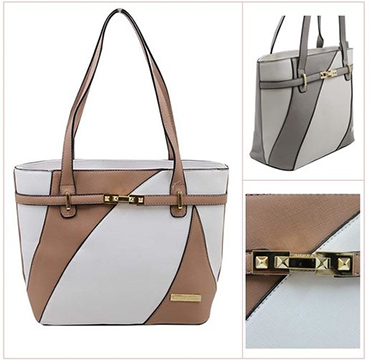The Cost Implications of Bag Manufacturing Choices
Time of publication: September 1st ,2024When you're choosing a manufacturer for your fashion bags, it's super important to dig into the financial aspects of the partnership. The costs involved go beyond just the initial quotes you get—they impact the overall quality, brand positioning, and long-term sustainability of your business. In this section, we'll explore how to find that sweet spot between cost and quality, why transparent pricing matters, and how to effectively budget for a manufacturing partnership.

Cost vs. Quality: Finding the Right Balance In the world of fashion manufacturing, cost and quality are often closely connected, but finding the right balance is like an art. It's tempting to cut corners, especially when starting out, but doing so can seriously affect your brand's reputation and how satisfied your customers are.
The Price-Quality Relationship:Lower costs usually mean that there are compromises somewhere in the production process—whether it's in the quality of materials, craftsmanship, or production methods. While it might seem like a good short-term strategy, low-quality products can result in more returns, dissatisfied customers, and ultimately damage to your brand image. On the other hand, investing in higher quality often leads to better products, happier customers, and stronger brand loyalty. The challenge lies in finding a manufacturer who can provide high quality at a price that matches your brand's market position.
Long-Term vs. Short-Term Costs:Consider the long-term consequences of your cost decisions. Choosing a manufacturer who charges more but consistently delivers high-quality products can actually save you money in the long run by reducing returns, minimizing defects, and boosting your brand's value. On the other hand, going for a cheaper manufacturer might seem like a money-saver at first, but it could end up costing you more later due to issues such as rework, waste, and unhappy customers.
Market Positioning:Your choice of manufacturer should match your brand's market positioning. A luxury brand can't afford to compromise on quality because customers expect top-notch materials and flawless craftsmanship. On the other hand, a brand targeting budget-conscious consumers might prioritize affordability, as long as the products still meet acceptable quality standards. If you want more insights on balancing cost and quality, please feel free to Contact Us.
Transparent Pricing:What You Can Expect Clear pricing is a key characteristic of a reliable manufacturing partner. It's not just about the numbers on a quote; it's about knowing exactly what those numbers mean and making sure there are no hidden costs that could surprise you later on.
Breakdown of Costs:A transparent manufacturer will give you a detailed breakdown of costs, including material costs, labor fees, overheads, and any extra services like customization or packaging. This transparency lets you see where your money is going and helps you spot areas where you might be able to cut costs without sacrificing quality.
Avoiding Hidden Fees:Watch out for hidden fees! They can totally ruin a good deal and leave you with an expensive mistake. Make sure to ask your potential manufacturers about all the costs upfront, like shipping, taxes, and any extra charges for changes during production. If they're honest about these things from the start, it's a sign that they'll be a trustworthy partner.
Negotiation:Don't be afraid to haggle. If the manufacturer's prices seem high, ask them to break down why they're so high. Sometimes, there are valid reasons like using top-notch materials or cutting-edge production techniques. But understanding these reasons can also give you an edge in negotiating better terms or exploring other options.
How to Budget for Manufacturing Partnerships: The key to successfully partnering with a manufacturer is to plan and budget wisely, taking into account all the necessary factors. The effective approach is as follows:
Understand Your Costs:Start by making a list of all the expenses involved in the manufacturing process. This includes obvious ones like production and material costs, but also less obvious ones such as shipping, taxes, insurance, and quality control.
Factor in MOQs (Minimum Order Quantities):The thing is, a lot of manufacturers have this rule where you must meet their minimum order quantities. And let me tell you, that can really mess with your budget. So make sure you understand these requirements and factor them in when planning your budget.
Be prepared for the unexpected:No matter how well you plan, there can always be surprise expenses. It's a good idea to allocate around 10-20% of your budget as a backup fund to cover unforeseen costs like shipping delays, material shortages, or last-minute design changes.
Review and Adjust:Keep an eye on your budget regularly as production progresses. Costs can go up and down due to changes in material prices, exchange rates, or other factors. By closely monitoring your budget, you can make necessary adjustments to stay on track.

Figuring out the costs involved in manufacturing is crucial when it comes to establishing a thriving fashion brand. By carefully balancing costs and quality, making sure prices are transparent, and planning your budget meticulously, you can lay a strong foundation for your brand's growth and sustainability. The right manufacturing partner will not only meet your current needs but also support your brand's evolution, ensuring long-term success.

